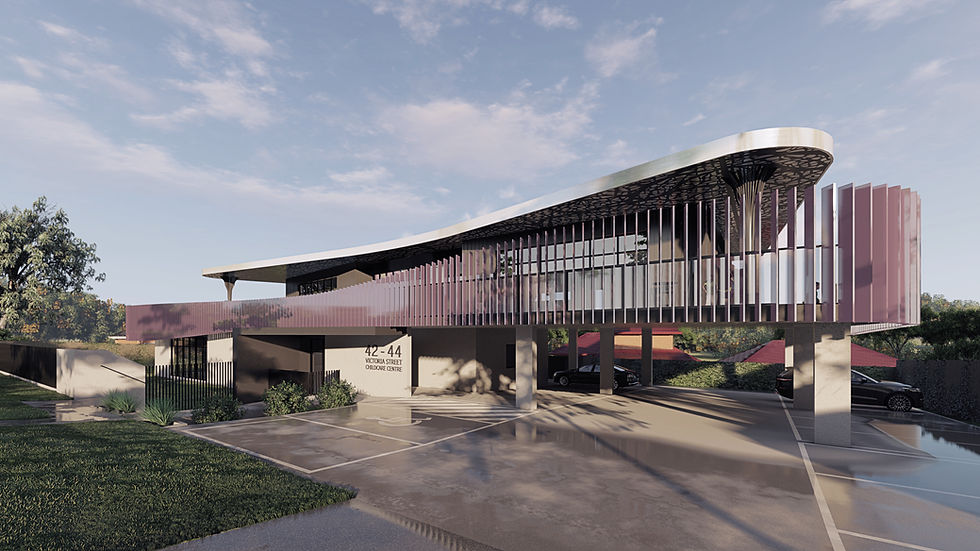Are the Planning Requirements in Victoria Changing, and What About the Objectors?
- Architeria Architects

- Sep 3, 2024
- 5 min read
Updated: Jan 28

According to 9News, there are proposed changes coming to planning requirements in Melbourne, which would be the most significant changes to planning laws since 2001. Allegedly the planning minister is in agreement with the new proposed reforms.
The proposed changes are said to respond to the current housing crisis to make it easier for developers to build homes to meet the government’s target of 80,000 new homes annually, according to 9News.
According to the rumours of the proposed new planning laws, one of the main changes would be to remove the ability to appeal the council’s decision for a planning permit. This would allegedly mean that residents lose the right to object to a planning permit if design standards are met. Currently, residents have the right to appeal the council’s decision by lodging an objection.
Some of the most common objections are related to:
Overlooking issues
Overshadowing issues
Changes to the neighbourhood character
Car parking or traffic issues
Noise issues
Mel Gawi, Principal Architect of Architeria Architects, has long been questioning if it is the right approach to allow residents to object and appeal a planning permit.
“As a Melbourne based architectural practice, we have been working with most councils in Victoria for many years. Whilst we have no issues with complying with the various planning scheme requirements, there is a lot to be said about the way the system works.”, he says.
“A planning permit process is a tedious and time-consuming process and a very stressful one for most clients. After complying with all the Residential Design Code (ResCode) and various design standards, which at times could result in buildings that are very impractical to build, let alone costly; the issue is when councils issue a Notice to Grant a Planning Permit, an objector can lodge an application for review at Victorian Civil and Administrative Tribunal (VCAT), this becomes a lengthy process that hinders the development’s progress. It makes sense that if a decision has been granted in favour of the development, we should trust that the council’s planning department has done their job in reviewing the compliance of the application, and that appealing to VCAT would become obsolete.”

Mel elaborates further, “So we are not just dealing with councils that could be very difficult at times and impose unwritten rules to change our designs to the extent it becomes impractical to build let alone destroying the aesthetics of the architecture, but now we have to deal with Mr & Mrs XYZ next door who doesn’t like new construction nearby. Sometimes the objectors are not even residing in the vicinity of the proposed development site.”
“We had a situation”, he says, “where the neighbour was about to put his new dwellings on the market next door to our client’s site so he lodged an objection just to delay our development so that it would not impact negatively on his sale.
I am sure there are some valid reasons for people to object, however as architects, we cannot run behind a moving target and try to please everyone’s opinion.
The planning process must become an objective one and not subjective.
There is another example where a recent planning application for an apartment development took the council two years to make a favourable decision, this involved the team at Architeria Architects making ongoing amendments to satisfy multiple council planners that worked on this job, since one after the other left their positions, each one of them with their own opinions about the application.
Council then finally issued a Notice of Decision to Grant a Planning Permit, and the application ended up at VCAT anyway as some objectors decided to exercise their right to object while the council had gone over this application rigorously to ensure all design standards were met.

VCAT has been very busy with objectors appealing decisions, and in this case, as well as in numerous others, the date for the compulsory conference was set 6 months down the track, and the VCAT hearing date 8 months away.This could make the total waiting period for our client in the vicinity of 3 years just to get a green or red light to proceed with the development.
Could you imagine the holding cost, the financial and emotional pressure on the developers, and as for us as architects, this will defer our building permit documentation stage significantly and the uncertainty it causes for all parties involved is just painful.”
"We certainly encourage changes to the planning regulations, to streamline the process of planning, and it does seem a sensible solution to remove the right to object if all design standards are met and the planning schemes are followed, and this should be easily achieved by relying on councils doing their job." Mel concludes.
Whether changes in the planning regulations will go through or not remain to be seen, and we are yet to witness the public opinion on this, however it feels as if a change is needed to streamline the process, and removing the right to object seems a like a step forward.
As we do most of our planning applications in-house at Architeria Architects, Mel Gawi and his team will be happy to assist you with your planning requirements. We are here to help so drop us a note to info@architeria.com.au with any questions.
Kate Gawi
Creative Director and Interior Designer
Architeria Architects
Planning Permit Process explained:
For more information relating to the Planning process refer to the relevant council websites.
Objectors Application at VCAT
For more information relating to the VCAT process refer to the VCAT website. |





Comments